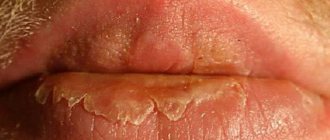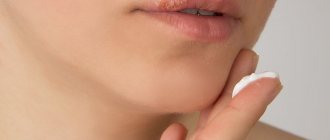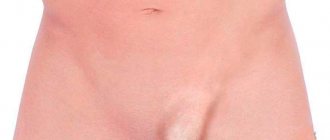Pain under the armpit of a woman (right or left) can be a sign of a variety of pathologies. Most often, this symptom is associated with inflammatory processes in the axillary lymph nodes and sweat glands, as well as with injuries. However, pain can also radiate to the axillary fossa from nearby organs and nerve endings. In this case, diagnosing the pathology becomes much more difficult. What ailments can be accompanied by pain in the armpit? And which doctor should I contact? We will consider these questions in the article.
Causes
The following diseases and conditions can cause armpit pain in women:
- enlargement and inflammation of the lymph nodes;
- inflammatory process and suppuration of sweat glands;
- cyclical hormonal changes in the female body;
- breast neoplasms;
- atheroma;
- herpes zoster;
- allergy;
- muscle injuries.
Only a doctor can establish the exact etiology of the pain syndrome. Therefore, if discomfort occurs in the armpit, you should urgently seek medical help.
Next, we will look in detail at the most common diseases that cause pain under the armpit on the right side.
Underarm pain and cardiovascular diseases
Both men and women may experience armpit pain due to coronary heart disease and myocardial infarction.
IHD and heart attack cause pain on the left side, accompanied by the main localization of pain behind the sternum. Coronary artery disease is accompanied by severe weakness, shortness of breath, a desire to take a forced sitting position, and swelling of the lower extremities. Myocardial infarction, in addition to shortness of breath, causes heaviness in the chest, sudden pallor, dizziness and even loss of consciousness. Signs of IHD can be relieved with nitroglycerin, but in case of a heart attack only an ambulance will help.
The causes of armpit pain can be completely different, but only a specialist can diagnose them. This could be a dermatologist, allergist, surgeon, cardiologist, oncologist, endocrinologist, or even a therapist. Choose your doctor's specialty through the 2doc online service. Remember that only a qualified doctor can make a correct diagnosis and prescribe treatment.
Lymphadenopathy
In this condition, there is an increase in lymph nodes. Lymphadenopathy is not an independent disease. This is just one of the symptoms of infectious and inflammatory pathologies. Enlarged lymph nodes are a response of the body's immune system to the penetration of bacteria or viruses.
Normally, the size of the axillary lymph nodes is no more than 1 cm. When they enlarge, pain occurs due to tissue stretching.
Lymphadenopathy may be one of the manifestations of the following diseases:
- flu;
- measles;
- tonsillitis;
- infectious mononucleosis;
- tuberculosis;
- rubella;
- brucellosis;
- felinosis (cat scratch disease).
With these pathologies, swelling of the lymph nodes and pain under the armpit in women appears. Lymphadenopathy during infections is accompanied by the following symptoms:
- increased temperature;
- sweating;
- weakness;
- deterioration in general health.
To get rid of lymphadenopathy, it is necessary to cure the underlying pathology. Patients are prescribed a course of therapy with antibacterial and antiviral drugs. After recovery, the lymph nodes shrink to normal size.
However, there are more dangerous causes of lymphadenopathy. This may be a sign of an oncological process in the lymphatic system: lymphoma, lymphosarcoma, Hodgkin's disease. With these pathologies, the patient experiences a slight but constant increase in body temperature, weakness, causeless weight loss, and an enlarged liver and spleen. These are early signs of cancer. In such cases, you should not hesitate to consult a doctor. For diseases of the lymphatic system, it is necessary to undergo a course of treatment with chemotherapy and radiation therapy.
Also, autoimmune diseases (systemic lupus erythematosus, rheumatoid arthritis) can cause swelling and pain in the lymph node under the armpit. With such pathologies, joint pain and rashes on the face are noted. The diseases are chronic. It is very important to start treatment on time, this will help avoid serious complications on the heart and kidneys. It is necessary to take cytostatics and corticosteroids for life. After achieving remission, pain and swelling of the lymph nodes disappear.
Treatment
Pre-hospital assistance
In case of traumatic injuries, rest is recommended. Patients with intense pain are advised to use a bandage; it is recommended to apply pain-relieving ointments outside the hair growth area. You should not remove insect bites yourself. Signs of inflammation, severe pain, general hyperthermia are indications for immediate consultation with a doctor. Lymphadenopathy, even in the absence of pain or minor pain, may indicate the presence of a serious disease, therefore, in such cases, examination by a specialist is also required.
Conservative therapy
In case of traumatic injuries, a protective regime with limited physical activity is necessary, and physical therapy is possible. Some other diseases require drug therapy:
- Pyoderma and nonspecific lymphadenitis
. Antibiotics are prescribed taking into account the sensitivity of the pathogen. Antibiotic therapy is often carried out against the background of surgical procedures. - Tuberculous lymphadenitis
. Long-term treatment with tuberculostatics, immunomodulators, and sometimes in combination with corticosteroids, plasmapheresis, and other methods is indicated. - Diseases of the mammary glands
. For mastopathy, hormonal drugs are used; for premenstrual syndrome, hormone therapy is supplemented with sedatives, antiallergics, and diuretics. Antibiotics are used for mastitis. For cancerous tumors, hormone therapy is carried out and chemotherapy drugs are administered.
Lymphadenitis
With this disease, the lymph node becomes inflamed and suppurates. Pain occurs under the armpits in women when pressing on the affected area. The cause of inflammation is the penetration of infection.
First, a small painful lump appears under the skin. The affected area then turns dark red and feels hot to the touch. The pain syndrome is very pronounced. Subsequently, a white head appears on the inflamed skin. This sign indicates the maturation of the abscess. The abscess usually breaks out on its own, after which the pain disappears and relief occurs.
Lymphadenitis is also accompanied by the following symptoms:
- increased temperature;
- deterioration of general condition;
- chills.
This pathology is treated by a surgeon. Oral antibiotics are prescribed, as well as local antibacterial ointments, which accelerate the breakthrough of the abscess. In severe cases, the inflamed lymph node is opened and drained.
Hidradenitis
Pain under the right armpit in women (as well as under the left) can be a sign of hidradenitis. Popularly this disease is called “bitch udder”. The pathology is similar in its manifestations to lymphadenitis, but with hidradenitis, it is not the lymph node that becomes inflamed, but the sweat glands in the armpit. Most often this disease is caused by staphylococci.
Inflammation develops gradually. First, a slight swelling appears under the armpit, itching and discomfort. Then the skin turns red and a cone-shaped lump appears. This formation is extremely painful. Within 10-15 days, an abscess forms, which subsequently breaks out on its own.
Quite often, not one sweat gland, but several at once, becomes inflamed and suppurated. Multiple painful formations appear under the armpit. Hidradenitis is accompanied by the following additional symptoms:
- high temperature;
- weakness;
- headache.
The patient is prescribed a course of antibiotic therapy. Local treatment with ointments with ichthyol, levomekol and synthomycin is also indicated. In advanced cases, the abscess is opened.
Hidradenitis recurs very often. Therefore, doctors additionally prescribe a course of immunomodulators and vitamins. It is recommended to follow a diet limiting fatty foods, regularly wash the armpits and treat the skin with disinfectants. This will help avoid relapse of inflammation.
Symptomatic therapy for flatulence
The number of flatulence is reduced or even disappears after proper adjustments to a person’s diet are made. With the obligatory limitation of foods that contribute to bloating and gas formation. Also, when eating, you should be in a calm environment, do not smoke at this time, and chew thoroughly. Avoid dry food and include first courses in your diet once a day. Simple physical exercises will have a beneficial effect on the removal of gases in the intestines. Until the cause of the disorder is finally determined, you can save yourself with absorbents, carminatives and other drugs.
If frequent bloating is accompanied by severe pain, colic or abnormal bowel movements, immediately go to the hospital for consultation with a specialist.
Mastalgia
Aching pain in the armpits in women can be associated with hormonal fluctuations during the monthly cycle. This symptom complex is called mastalgia. The pain is periodic. They occur in the second phase of the menstrual cycle, shortly before the onset of menstruation.
The pain is localized in the mammary glands and is noted on both the right and left sides. Unpleasant sensations radiate to the armpit area. Most often they are not pronounced and do not cause any particular inconvenience. However, in some cases the pain can be quite intense.
Mastalgia is accompanied by the following symptoms:
- engorgement of the mammary glands in the second half of the menstrual cycle;
- slight enlargement of the axillary lymph nodes (in rare cases);
- disappearance of pain after the onset of menstruation;
- mood swings (irritability, tearfulness).
This symptom complex is not a pathology. Under the influence of natural hormones, the patient’s mammary glands become engorged and lymph outflow worsens. This leads to pain syndrome.
Mastalgia is observed in many women throughout the reproductive period. This symptom disappears only during menopause. However, if during menopause the patient undergoes a course of hormone replacement therapy, then she may experience cyclical chest pain, radiating to the axillary region.
What to do if you have pain in the armpit before your period? In women, slight discomfort during this period is considered a natural phenomenon. However, if the pain syndrome is severe and disturbs your well-being, then it is necessary to undergo a course of treatment. Patients are prescribed analgesics, drugs with estrogens, and sedatives. Taking diuretics is also indicated, this will help normalize the outflow of lymph. Women suffering from mastalgia are advised to limit their fluid intake.
Underarm pain in women and the menstrual cycle
Women experience such pain in the armpits that become a harbinger of the onset of menstruation. This occurs due to the formation of a compaction in the upper or outer lobes of the mammary glands, and pain from the chest area moves to the armpit. Unpleasant sensations affect one side or both armpits at once.
This phenomenon is called mastalgia. However, it is difficult to describe the same manifestations of pain. In one case it is an aching pain, in the other it is sharp and squeezing. Very often, such axillary pain does not even allow you to move your arms.
The symptom can appear throughout the reproductive period. Menopause causes pain to subside, but pain may increase when taking hormonal pills.
Breast tumors
The cause of pain under the armpit in women can be oncological pathologies of the mammary glands. At an early stage, tumors do not manifest themselves and are asymptomatic. Neoplasms are detected incidentally during a mammogram. The appearance of pain indicates an advanced stage of the disease.
The pain is localized in the mammary glands and radiates to the armpit on the affected side. Unlike mastalgia, the pain syndrome is permanent and is not associated with the monthly cycle. Upon palpation, a dense formation is felt in the chest and in the axillary fossa.
Breast cancer is also accompanied by the following symptoms:
- The nipple becomes retracted, and ulcers and scales can be found on its surface.
- Pathological discharge from the breast appears, not associated with lactation.
- The color of the skin in the area of the affected mammary gland changes. The epidermis becomes uneven and resembles a lemon peel in appearance.
- The breasts appear swollen and deformed.
- The axillary and supraclavicular lymph nodes often become enlarged.
First, a slight aching pain occurs under the armpit on the right or left (depending on the location of the tumor). As the tumor grows, the intensity of the pain syndrome increases. Severe swelling of the axillary fossa appears, which can spread to the upper limb.
Conservative treatment methods are effective only in the earliest stages of the pathology. If the patient experiences severe pain, this usually indicates a significant growth of the tumor. In these cases, treatment for breast cancer can only be surgical.
Causes of gas formation in the gastrointestinal tract
Despite the fact that flatulence is classified as a problem associated with the gastrointestinal tract, there are initial stages that negatively affect the condition of the intestines, by eliminating which you can independently eliminate the accumulation of gases.
Physiological reasons
- Frequent consumption in the diet of foods that affect gas formation (brown bread, kvass, legumes, cabbage, fats). This leads to the fact that the intestines cannot cope with the timely removal of accumulated gases.
- If you frequently swallow air while eating, this happens when you eat hastily or smoke.
- Flatulence in most people is caused by problems with the gastrointestinal tract. But a similar phenomenon is also often observed after 50 years, when the intestinal walls atrophy, they weaken and become prominent, which contributes to the accumulation of gases.
During pregnancy
- In the third trimester, irregular gases often occur, accompanied by belching, constipation and heartburn. The reason for this is compression of the intestines due to an enlarged uterus.
- Progesterone, produced by the placenta to maintain pregnancy, has a relaxing effect, which causes gas retention.
- A woman expecting a baby increases the load on the pancreas and liver. This leads to digestive disorders and increased formation of gases.
- If the breakdown and absorption of substances by the body is impaired, insufficient fermentation of the esophageal fibers occurs, which provokes fecal retention and the inability to remove excess gases.
Infectious diseases
Inflammatory processes that occur under the influence of microorganisms (pathogenic) and affect the large and small intestines, leading to disruption of the digestive system. The result is the inability to move gases through the intestinal walls.
- Acute intestinal infections, in which diarrhea, nausea, vomiting and colic occur. The accumulation of gases occurs during rotavirus infection, dysentery, salmonellosis, gastritis and other gastrointestinal lesions.
- Intestinal candidiasis. When immunity decreases, fungal flora is activated, which is an ideal environment for flatulence.
- An intestinal infection caused by Giardia (single-celled parasites) that live in the lumen of the small intestine. If this cause of flatulence is present, the patient will lose a lot of weight, and there will be increased excitability and irritability.
- The presence of helminthiases in the body provokes swelling and bloating. In advanced forms, diarrhea with blood and rectal prolapse are characteristic.
Dysbacteriosis (changes in the normal intestinal flora) becomes the main cause of the development of infectious diseases that cause flatulence. There is a disruption of natural processes that go into the fermentation stage, thereby provoking gas formation.
Pathology of the large intestine
- Inflammatory processes for a long time, which were not treated in any way.
- In the presence of benign tumors, intestinal polyps, which slowly but progress. Constant flatulence, blood in the stool, acute fighting sensations can become the first signs of the development of cancer.
- With enlargement of the colon (congenital or acquired). The pain occurs both locally and diffusely, which makes it difficult to accurately determine the location of the anxiety in the gastrointestinal tract.
- When the structure of the intestinal wall is disrupted, it protrudes and the formation of air cysts. These are the reasons why the process of gas removal from the intestines slows down.
Diseases of the stomach and esophagus
- Flatulence can occur with lesions of the digestive tract (hernia, reflex disease).
- Gastritis with high acidity is also a cause of poor gas removal.
Purulent processes
- Peritonitis.
- Chronic appendicitis, abscess.
Problems with the genitourinary system
- Acute prostatitis negatively affects nearby organs, that is, the intestines.
- Severe form of pyelonephritis, renal colic, during which compression of the intestines occurs.
Endocrine system disorders
- Low thyroid hormone levels.
- Premenstrual syndrome.
causes and symptoms of flatulence
Sebaceous cyst
Pain under the armpit of a woman (on the right or left - it doesn’t matter) can be caused by a sebaceous gland cyst - atheroma. This formation under the skin looks like a ball filled with fatty contents. It is mobile and has clear contours.
The axillary region is rich in sebaceous glands. A cyst is formed as a result of their blockage. This is facilitated by poor hygiene, excessive sweating, excessive consumption of fatty foods and the use of certain medications. Atheroma is a benign neoplasm. But in rare cases, it can develop into a dangerous tumor.
In the initial stages, atheroma is not accompanied by pain and does not cause any particular inconvenience to the patient. However, the cyst easily becomes infected and suppurates. When bacteria penetrate the surface of the neoplasm, a white head forms. Pain under the armpit on the right or left usually appears at the stage of suppuration of atheroma.
The abscess takes a long time to mature and often breaks out on its own. But in such cases, atheroma, as a rule, recurs after some time. Therefore, it is recommended to remove it surgically along with the capsule. Only in this case can you get rid of the cyst completely.
Under no circumstances should you try to squeeze out festering atheroma on your own. At home, it is impossible to completely remove the cyst along with the capsule, but you can very easily introduce an infection into the resulting wound.
Axillary pain of oncological origin
Quite often, such a terrible disease as breast cancer is asymptomatic. In many cases, it is diagnosed during a routine mammogram. The symptom of axillary pain can become a signal of cancer, especially in combination with the appearance of a lump.
It is important to know that the likelihood of breast cancer is higher in women who have not given birth or those who have given birth for the first time after 30 years of age. Of course, the list of provoking factors includes smoking, drinking alcohol and consuming fatty foods.
Family history plays an important role, that is, heredity, early menstruation and late menopause, possible breast injuries, diagnosed diabetes mellitus and obesity, hypertension and more than 10 years of using oral contraceptives. All these are cancer-causing factors. Try to exclude at least those that are subject to human control.
Herpes zoster
Pain on the right under the armpit and in the ribs may be a sign of herpes zoster. This disease affects women who have had chickenpox in the past. The causative agent of the pathology (Herpes zoster virus) remains in the human body forever. Its reactivation leads to the occurrence of herpes zoster.
The virus attacks nerve endings. At the beginning of the disease, aching pain appears under the armpit and in the ribs. Then pink spots form on the skin. After a few days, they turn into bubbles filled with liquid. The patient's temperature rises and her health worsens. The pain intensifies sharply, becomes burning and unbearable.
Patients are prescribed antiviral drugs (Acyclovir, Famvir), as well as painkillers (Diclofenac, Ibuprofen). Antiherpetic ointments (Zovirax, Herpetad, Vivorax) are used to treat skin rashes.
It is important to remember that a patient with shingles can transmit the virus to others through airborne droplets or contact. In an infected person, the disease occurs in the form of chickenpox.
Allergy
Pain under a woman’s armpits (right or left, it doesn’t matter) can be caused by the use of deodorants. Allergic reactions are observed in women with individual intolerance to the components of perfumes.
With allergies, red spots, irritation and itching form on the epidermis. The skin in the armpit area is especially delicate, so rashes are often accompanied by pain. Patients are advised to take oral and local antihistamines. During treatment, you must temporarily stop using deodorants.
Most often, this reaction is caused by deodorants containing zinc and aluminum salts. Allergy sufferers should avoid using such products.
Muscle pain
Nagging pain under the armpit in women can be associated with trauma. The muscles and ligaments in this area are very susceptible to stretching. They can be easily damaged by heavy lifting, sudden movements of the arms, and even by awkward body positions during sleep.
When the axillary muscles and ligaments are sprained, the pain is constant and intensifies with movement and pressure. It is recommended to put as little stress on the injured arm as possible. In the first 3 days, cold compresses are applied to the affected area. In the future, gels and ointments are used to relieve pain and heal tissue (Diclofenac, Lyoton, Voltaren). At the recovery stage, therapeutic exercises and physiotherapy are indicated.
Diagnostics
Which doctor should a woman contact if she has pain under her arm? Whether you feel discomfort on the right or left, it doesn’t matter. In any case, as we found out, such a symptom can indicate many diseases. First you need to visit a therapist. If necessary, the general practitioner will issue a referral to a specialist.
To clarify the etiology of the pain syndrome, the patient may be prescribed the following examinations:
- blood test for pituitary and ovarian hormones;
- tumor marker test;
- MRI;
- x-ray of the humerus;
- mammography;
- Ultrasound of the mammary glands;
- blood test for antibodies to infections;
- Dopplerography of lymphatic vessels;
- biopsy of an enlarged lymph node;
- blood test for immunoglobulin E (if allergies are suspected).
The choice of necessary research methods depends on the intended diagnosis.
Diagnostic methods
The initial diagnosis is made by a therapist (in children, a pediatrician).
Collection of verbal information:
- when did the pain appear and what preceded it;
- presence of chronic diseases;
- what additional symptoms are present when pain appears;
- the presence of chronic diseases in close relatives.
Examining the patient visually:
- palpation of the armpit to detect compactions;
- determination of the condition of the skin (swelling, redness, presence of pustules);
- listening to the rhythm of heart contractions and breathing through a stethoscope.
Taking tests to rule out the presence of infection in the body. And also on the concentration of hormones and the presence of immunoglobulin E (antibodies produced during allergies).
Completing additional procedures:
- ECG. To identify heart pathologies;
- Ultrasound and MRI to determine the condition of internal organs and exclude the presence of tumors;
- X-ray. To identify pathologies in joints;
- Mammography. To identify neoplasms in the mammary glands;
- Dopplerography. To examine the state of the lymphatic system.
- Test for the presence of cancer cells.
By specialists, the diagnosis can be expanded for a more complete examination.
How to relieve pain
What to do if you have pain under the armpit on the right (or left)? This symptom can be caused by a variety of reasons. Self-medication in this case is unacceptable, because pain can be a sign of dangerous pathologies. It is necessary to visit a doctor, undergo all necessary diagnostic tests and cure the underlying disease. After all, pain always signals trouble in the body.
If the pain syndrome is very severe, then at the pre-medical stage the following measures can be taken:
- Take an anti-inflammatory pain reliever tablet, such as Ibuprofen.
- For injuries, you can apply cold to the armpit.
- If the pain under the arms is caused by irritation of the epidermis, then you can apply Bepanten ointment or Rescuer balm to the inflamed skin. However, such drugs are not recommended for use in case of inflammation of the lymph nodes or sweat glands.
Immediately before visiting a doctor, you should not take large doses of painkillers. This can blur the clinical picture and make diagnosis difficult.
Physiological structure of the armpit area. What can hurt there?
The armpit is located next to the chest under the shoulder joints. It is surrounded at the front by the pectoralis major muscle and at the rear by the broad dorsal muscle. When you raise your hand up, a depression is formed in this area.
In the skin layers of the armpit are located:
- hair follicles. Hair in this area protects the delicate surface layer of the epidermis from the development of diaper rash;
- sweat glands. Sweat prevents the body from overheating during prolonged exposure to hot conditions;
- sebaceous glands. The fat they produce prevents the skin from drying out and creates a protective barrier against the penetration of certain types of microorganisms.
Under the skin layer of the armpits are located:
- fatty tissue. It is necessary to normalize heat exchange in the body, and is also a reserve supply of energy and fat-soluble vitamins;
- blood vessels. Nourish tissues with oxygen and nutrients, remove decay products;
- nerve fibers. Provide muscle contractility and touch;
- lymph nodes. They protect the body from the development of tumors and prevent the spread of infection throughout the body.
If the activity of any of the listed components of the armpit is disrupted, a pain symptom develops, indicating the development of pathology.
Prevention
To prevent the occurrence of pain in the armpit, the following recommendations must be followed:
- Use only hypoallergenic hygiene products (soap, deodorants).
- Keep the armpits clean.
- Avoid excessive exposure to heat, as this promotes increased sweating.
- You need to be very careful when shaving armpit hair. Even small cuts and scratches can become a gateway for infection.
- During the second phase of the menstrual cycle, you should not drink large amounts of liquid. This will help avoid mastalgia.
Women over 40 years of age must undergo an annual mammography examination and donate blood for tumor markers. At this age, the risk of breast cancer increases. Regular examination will help prevent the development of dangerous tumors.









